This is a guest article by Martin Luenendonk from FounderJar
Validating a product idea is one of the first real headaches any serious startup faces. The risk of failure for new businesses is very real, with more than 50 percent of new small businesses tanking within their first year. A huge contributor to this trend is the overzealous newbie businessperson launching products that don't have market demand.
This usually happens because entrepreneurs get so excited and passionate about their ideas to the point that they ignore the practical approach of creating a product that people actually want.
A business without demand cannot be sustained, for even a short period. As a result, you must take the necessary steps to establish that people are willing to pay for your product before devoting your resources and time to creating, launching, and marketing it.
But product idea validation is easier said than done. And while it has a simple premise, entrepreneurs often find themselves struggling to get it right.
Not only that, a major issue new business owners face when it comes to validating a product idea is how to do it without giving up too many resources, especially in terms of capital. Launching a new business or product could be a capital-intensive process, and entrepreneurs are always looking for ways to cut down on expenses.
The Three Main Questions of Product Idea Validation
Product idea validation doesn't have to be expensive or confusing as we shall find out in this article. To find your product/market fit, you have to answer three questions:
- Can it be built? Here's where you find out what you would need to build the product: expertise, equipment, capital, etc.
- Should it be built? Here you determine if there's a demand or need for the product, its chances in the market, and potential profitability.
- Will people be able to use it? This is where you choose the features of the product. You'll need to determine how complex it will be. You want to launch a product that people will find easy and convenient to use.
Having established these questions, the next step is to go about answering them as sufficiently and cost-effectively as possible. The following tips will help you validate your product idea cheap and fast.
Identify Your Target Market
Knowing your target audience is the very first step to validating whether your product idea is an ideal venture or not. This is where you would determine if there's an actual market with consumers who need and will pay for your product.
The most accurate way to discover your target audience is to point out a problem that your product is solving, and check for people who might have been finding a solution to that particular problem.
It's just not enough to identify your target audience. You need to understand them, their peculiarities, and possible pain points. This data will influence how you design your product. Why? Because you're making a product that people should actually be able to use.
You must also consider the purchasing power of your target audience. This will affect how you set the price value of your product.
You don't want to set a price that will drive people away before they even consider the product. So you have to take into account the economic status of your potential consumers, what they likely do for a living, salary average, financial range, etc.
This process is most applicable for entirely new products that don't already have a market price or competitor standard.
Start with a Narrow Audience
It’s considered a good practice to start with a narrower target group and problem point for your new product, because often, most entrepreneurs try and fail to create a product that will cater to "everyone" or a wider demography.
While that's not impossible, it's much more unrealistic than having a specified niche. It's also riskier and takes up more time and resources.
Unless your idea is a service like an eCommerce platform that has a wide and diverse inventory of products, or it’s a software or website that offers multiple services, then attempting to sell to a wider audience might not be profitable.
Of course, this depends on whether you have done the necessary research to be certain, and if you have the needed resources to sustain that business model for the first few years.
Usually it’s just better to focus on, say, a particular age group or a group of people with a specific shared interest, geographic location, and similar qualities. These details would mostly be determined by the demographics of people most likely to have demand for your product.
For instance, if you were trying to create a car tracker software, you would target an age group that is most likely to be active with cars and would also have the know-how to appreciate your type of product. Think ‘‘tech literate millennials that own cars.’’
To narrow down your research and early marketing efforts, you can target this group to a specific location, most likely your immediate locale or whichever locale presents the most opportunity. This would give you a result like, ‘‘tech literate millennials that own cars and live in Illinois.’’
Starting with small, narrow groups saves small startups resources, capital, and time, especially for advertising and launching a new product. As you scale and grow bigger, you can begin to expand your consumer base and reach wider audiences at a better pace.
Whatever the scope and size of your target audience, you want to know who they are and understand their needs and behavior. How do you do that?
Conduct Field Research
This might seem old-school, but it's actually one of the cheapest and most effective ways to discover if there's a group of people out there that will actually need your product.
Think about people that fit the description of your target market and go into physical spaces where you're likely to meet these types of people. These could be shopping malls, parks, working environments. It could even be friends and family.
The idea is to engage them and get them to reveal their approach to the possible problem. Of course, this is easier said than done.
Instead of just launching straight into your idea and very possibly confusing your audience, you could use the following framework to get them to reveal if they possibly have the problem you're trying to solve.
- Mention the problem to them to see and ask if it's something they're experiencing or can relate to.
- Ask them how they currently solve the problem.
- Ask if they face any challenges when trying to solve the problem.
- Ask how significant the problem is in their lives.
- Ask them how important a solution is to them and how much they think it will improve their lives.
You can engage your targets with this framework by either word of mouth or through paper questionnaires. While your reach may be limited with field research, you can be sure of the quality of your information, especially if you use the suggested question framework.
Make sure to ask for their email addresses and contact information if they don't mind, especially those of people that responded positively. You'd need that information for further validation and marketing.
A general rule of thumb is that, if you ask 15 people and 10 respond positively, there’s a good chance your product has a realistic market demand. Be mindful though that you can't fully bank on that data alone.
Conduct Online Surveys
Your online research could be in the form of video interviews with people you consider to be in your target audience.
Email questionnaires are a smart way to find out people who are interested in a solution to the problem you're trying to solve. If you don't have an email list of contacts already, learn how to build one and run a quick email campaign.
Your surveys should be quick, straight to the point, and well written enough to interest your recipients.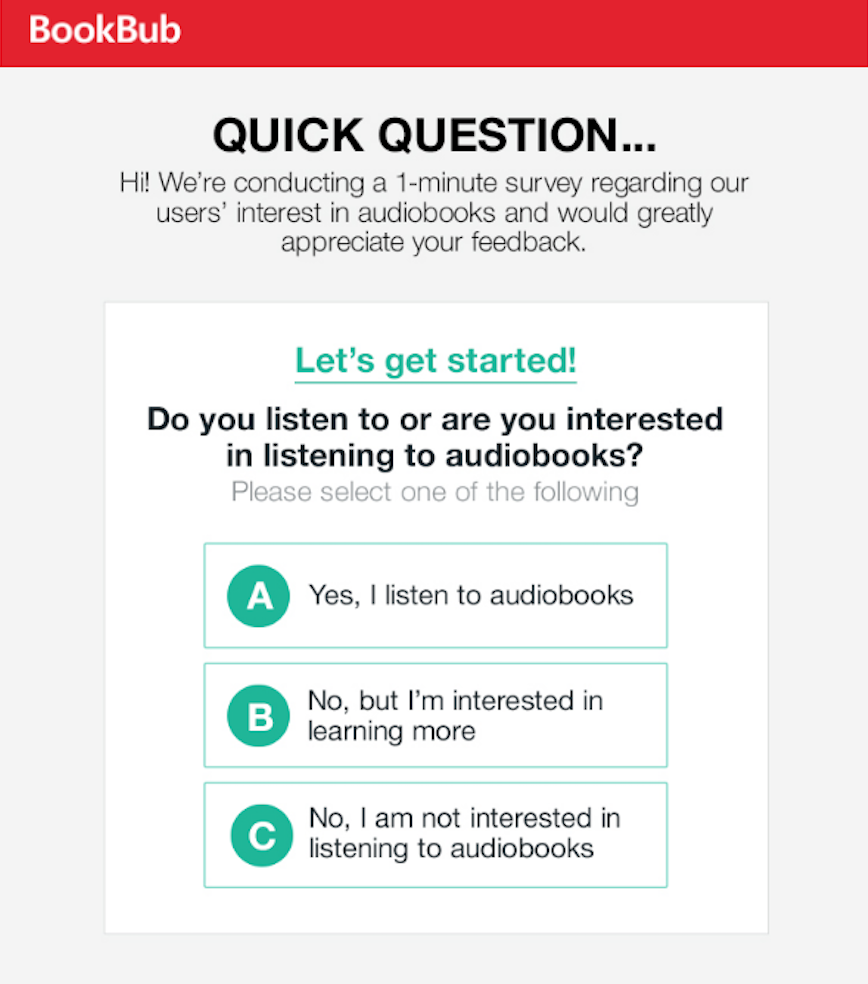
Here’s an example of an email survey Source: MailCharts
Note that this was a survey sent by a brand to subscribers that were most likely already familiar with the brand. Since you’re probably not following the same scenario (although this depends on how you retrieved the email contacts), you might want to be a bit more specific with your approach.
Take the time to familiarize yourself with best email marketing practices and effective survey questions so your efforts can deliver better results. This process is usually effective, and can be very cheap or even free, depending on the mass email service you use.
Chatbot surveys are a good and interactive way to present your questionnaires as well as a very likely way to generate responses.
Generally, the idea of using online surveys to research your target audience is that it's faster and less effort-intensive than physical research. It's also easier for covering a larger number of people.
On the other hand, it does require a little bit more capital than field research. It's advisable to use both methods as they expand the scope of your research and give you more robust data to work with.
Research the Market
Researching the market requires that you cast a wider scope of research and discover more information about your product's potential market.
The information usually includes the size of your potential market, your possible competition, consumer behavior, and the important market dynamics such as the price value or range of your product, possible suppliers (if you need them), costs of production, and other barriers you might face in building the product.
To discover the size of your potential market and learn about the market's trends:
- Read reports and statistics that pertain to your industry or niche from credible research sources.
- Check social media hashtags to know how popular the product or problem is on social media. Through this channel, you can discover what people are saying about the product on social media. This is a valid source of discovering out consumer pain points that you can work on to improve your product.
Use Google Trends
Google Trends is a free tool that shows you how much a topic is trending over a period of time in any location. This would give you a good idea of the relevance your product or problem has in your desired audience.
For instance, as a potential car tracking software startup, Google trends would let you know how many people in a particular country or city care about car tracking software through the number of online searches or browsing popularity of the term.
Google Trends data for the car tracking app example
You can also compare the trends of two topics or ideas.
Comparing search data for synonymous items
This can be helpful if you're thinking of an alternative idea. It’s also a way to find out what particular version or idea of your product is prevalent in consumers’ minds.
You can then sort the results by locational demographic. This feature can help you determine what location would be most fertile for your marketing or launch.
 Keyword search data by regions
Keyword search data by regions
Note that you have to be certain of the right keywords to search to give you the most relevant results. Finding out your target market size will let you know if you're entering an existing market or if you're going to create a new one. With this data, you will be able to avoid entering an outdated market.
Validate Your Production Needs
While identifying and researching your target market lets you know if your product should be built, this step determines if your product can be built. Essentially, it requires finding out all the necessary information about the resources you need to build your product.
Any realistic product would need the following resources.
Capital. Funding for all project stages, including validation, marketing, product launch, sustained production and running of the business (initial startup costs) up until all production expenses are covered and exceeded by revenue generated.
Infrastructure. The tools and ‘‘body parts’’ (whether digital or physical) needed to experiment and eventually build the product and the financial expenses these would incur.
Manpower. The skills and human services, basically employees and/or partners, needed to facilitate and optimize production and the payroll required to deliver financial compensation and ensure a typical work environment for them.
Time. The timeframe and strategic schedule that would be exhausted to make the product a reality.
The specific details of these resources would be determined by the nature of your business and the size and strategy of your startup. To find out what exact resources your products would need, you should:
Research your competition. Discover your competition’s best practices. Find out about their origins and startup history if possible. Find out how they facilitate production and sustain their work environment. This would give you a good idea of the resources you might need and steps you might need to take.
Research on how to build your product. If you already have a product idea, there’s a good chance you’ve already planned how it’s going to be built or competitors have already set this path. If none of these has happened, you have to use the internet’s vast resources or improve your education to find out exactly what tools and strategies you’ll need.
Scout for suppliers. Once you’ve determined the tools and ‘‘body parts’’ you need to build your product, look for suppliers that will provide them. Suppliers will give you info on the price ranges of your product components, perhaps the whole product itself, tools and services needed to create it, and other necessary expenses that would be involved in the process of production.
Conduct a break-even analysis. A break-even analysis sets a timeframe for when you will generate the revenue needed to cover all your expenses, including tax and marketing costs. It’s therefore a vital part of your business plan and a way to foresee your chances of survival.
Analyze Your Competition
Researching your competition is one of the fastest ways to understand your potential market and validate your production needs. Depending on the method and intensity of your research, it's also a cost-effective process.
There are tools that will save you money and also give you fantastic results. Google Keyword Planner will reveal the online presence of existing competitors. You can also use it to find out what words consumers use when searching for your product or a problem that your product solves.
Discovering the most popular keywords can help with choosing your product’s name or your website domain name. It’s usually smarter to just go for a popular keyword or at least something closely related so your product has a better chance of being found on search results.
Website traffic software will help you analyze competitors' websites and reveal strengths and weaknesses you can learn from when building your website.
Other methods of researching your competitors such as checking their social media and support forums or blogs (if they have any) will let you see their customer reviews and complaints or frequently asked questions.
This would give you an honest appraisal of consumer pain points to take into account when adding features to your product.
A great benefit of competitor research is that it gives you a better idea of how you can position your unique value proposition. It has to be something you can offer that your competition can't. It could be a better price range, or something that makes life a little easier for consumers. It could be a special (and useful) feature that hasn't existed before. Whatever it is, it would boost your product's chances of thriving in the market.
Conduct an Online Experiment
This is a very quick and efficient arm to the product idea validation process. It might just require a little more financial commitment on your part, but it's still generally very cheap.
Essentially it requires conducting a marketing experiment by running a mock or introductory advertising campaign and building a quick landing page.
The idea is to market an idea of the product or a minimum viable product (MVP) -- rather than the actual product -- to your target consumers. Basically, you create quality and compelling advertising content describing your product and the solution it offers and then market this through different channels: social media, email, and paid search engine ads.
The ads will then direct consumers to your landing page, where interested persons will make decisive clicks and submit their relevant information.
By measuring the effectiveness of your campaign through metrics such as signup rates, click-throughs, how long they spent on the site, and bounce rates, you can gauge to an extent the level of demand available for the product.
The engagement and feedback your social media campaign generates from your audience can be used as constructive information, both to improve your idea and to determine their level of interest.
A landing page campaign will serve as a way to introduce your brand and your product to your potential customer base in anticipation of your product launch. You can give them a time guarantee of when to expect your launch, setting the groundwork for a successful launch.
Generate Leads with a Landing Page
A landing page campaign can naturally act as a lead magnet. By asking your target audience to submit their email addresses in exchange for some benefits or perks you can offer, usually based on your product, you can build a mailing list.
The incentive you offer in exchange for the email can vary. It could be a minimum viable product, or it could be an exclusive access to your product when it launches, like a free copy for instance. Whatever it is, it has to be something that would genuinely interest people, or you will receive a low response rate.
Landing pages can be used to test the potential price of your product, most often with MVPs. Usually this is done by adding a CTA button with a price value to your landing page. But you could also suggest a price point in your descriptive copy, letting your audience know there’s a possibility of making a purchase.
The engagements your landing page and MVP generate even after you’ve mentioned a price point will give you a solid idea of how much people might be willing to pay for your actual product.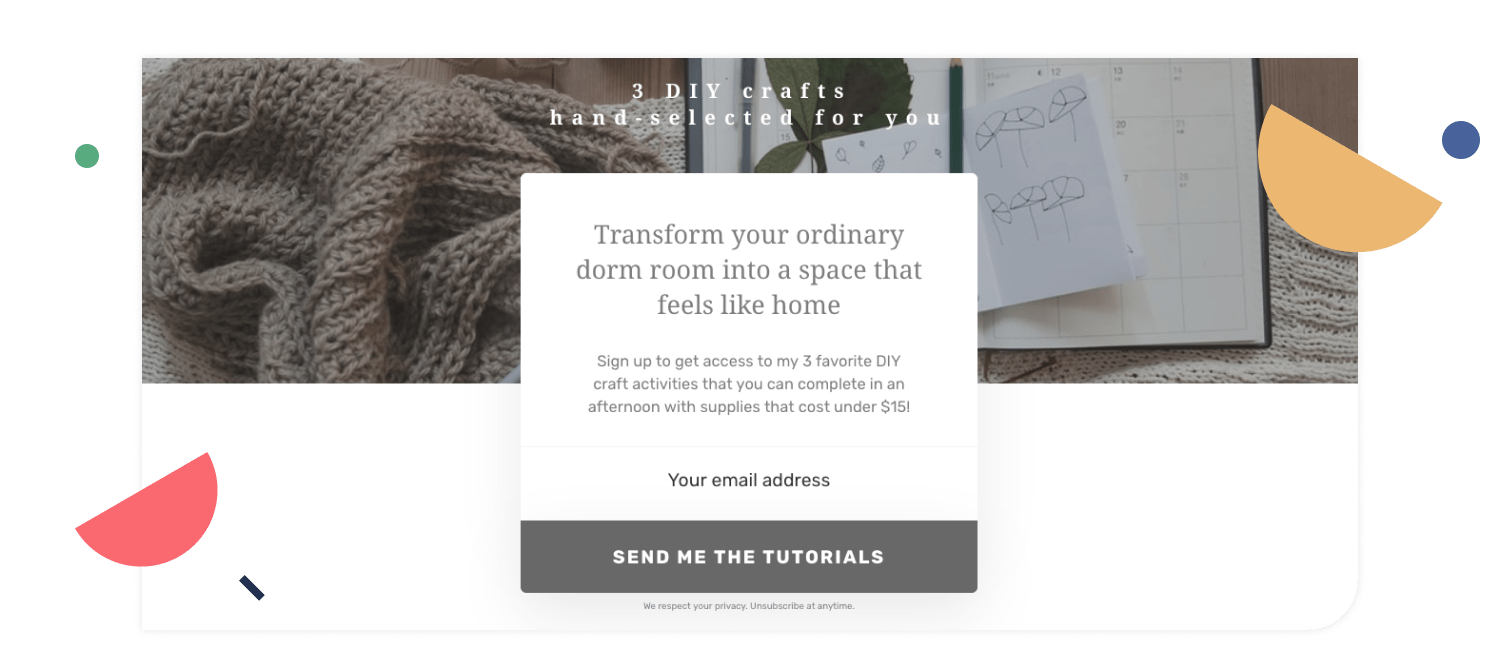
Here’s an example of an idea validation landing page from Convertkit. This one was built specifically with the aim of collecting emails
Use Your Mailing List
A mailing list of interested subscribers is actually a must-have for your idea validation and product launch. With a mailing list, you can use email campaigns to engage subscribers, gain valuable feedback, and more importantly, create anticipation for your product launch.
Getting your subscribers to commit in advance of your launch is key to having a successful launch. You can generate commitment by getting them to register to be one of the first to receive the product. If you were planning a physical launch event, then collecting registration in advance would be super useful.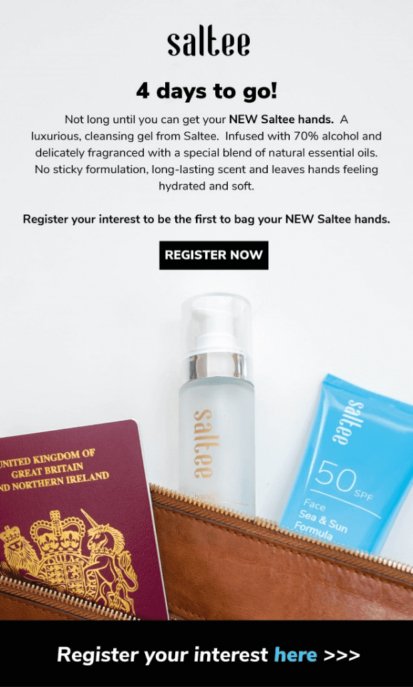
This skincare brand, Saltee, generated commitment in a new product launch by getting subscribers to register for the product 4 days in advance of the launch
Your product launch email campaign should be spread out strategically over a time period. This time period could vary, but it’s considered good practice to start teasing your audience at least two weeks in advance.
The product launch campaign naturally coincides with the idea validation process, and if you’re a startup, this could take longer than two weeks.
Use a Crowdfunding Campaign
Another experiment you can conduct to measure product viability is a crowdfunding campaign. A crowdfunding campaign will not only build capital for your business, it will also prove the level of demand for your product and how much people might be willing to pay for it.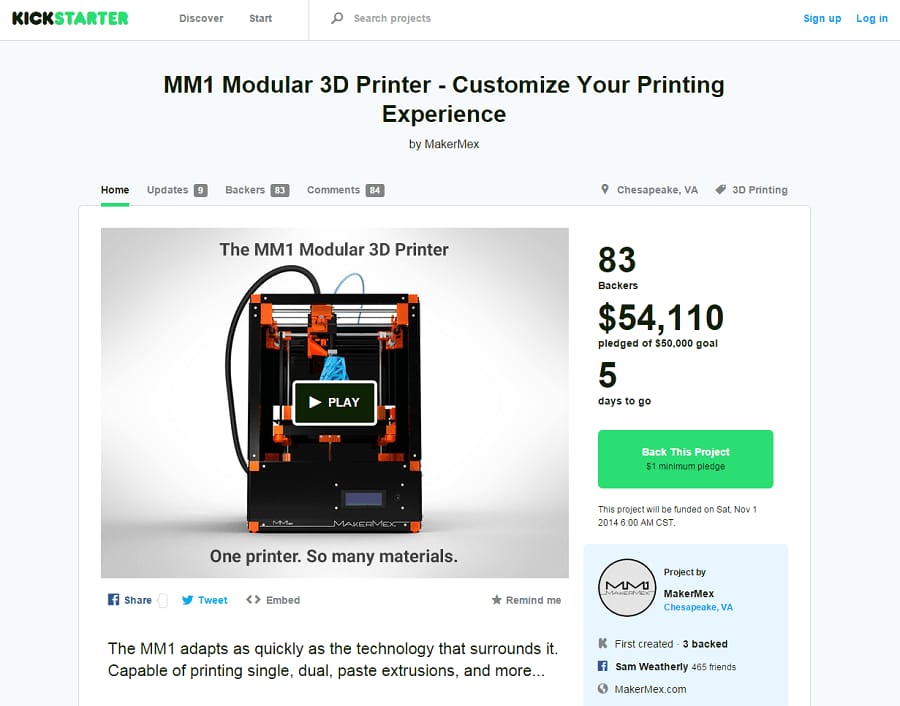
Here’s an example of a crowdfunding campaign Source: kickofflabs
Ideally, your landing page campaign should be used to create and warm leads in advance of your crowdfunding campaign. This gives you a better chance of generating funds.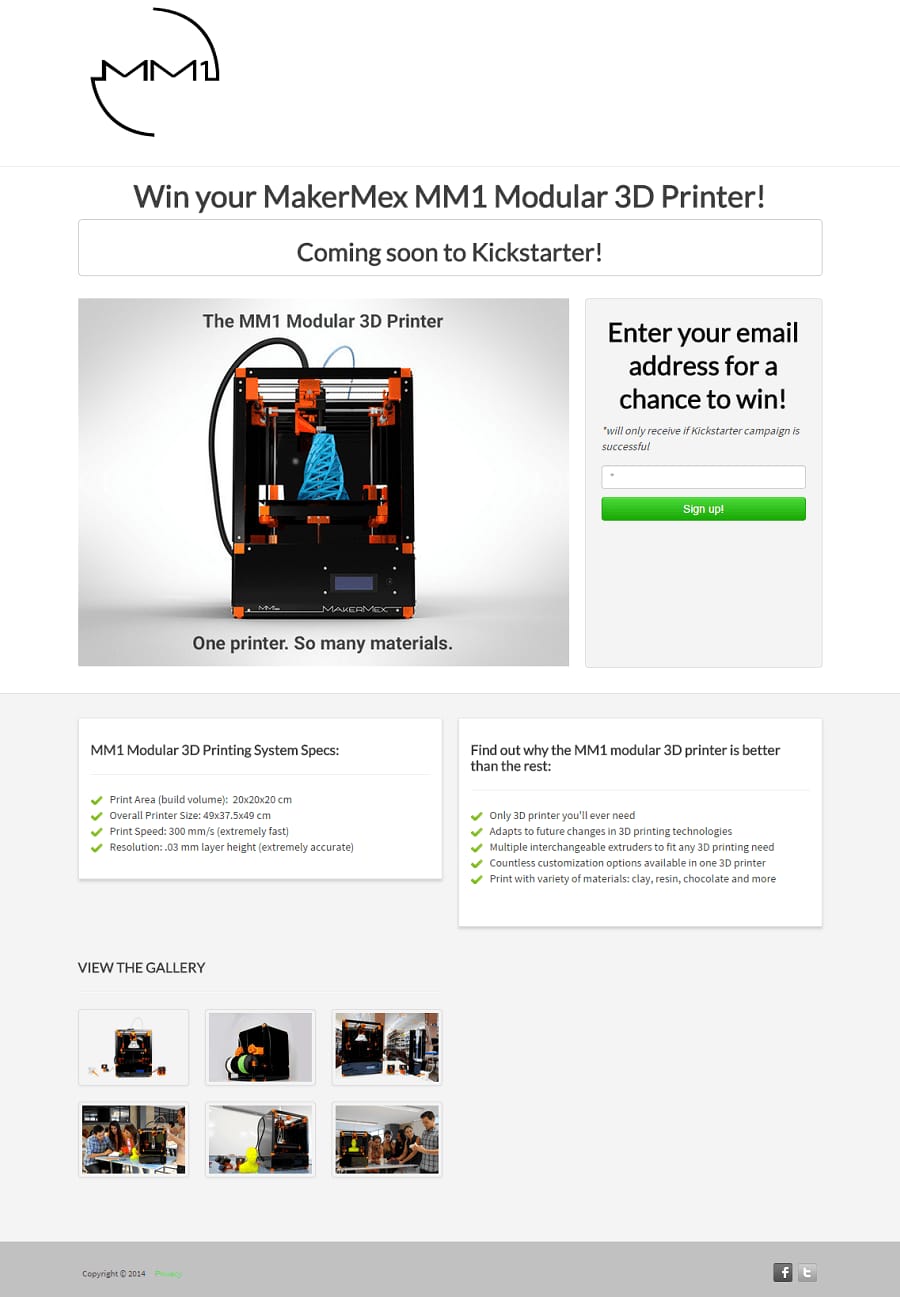
Like in this example, a landing page campaign was used to collect emails in advance Source: kickofflabs
Build a Prototype
A prototype is a very raw version of your product that only performs or describes the basic solution you're looking to offer and nothing else -- usually. It's also regarded as one of the fastest and most effective ways to pitch your idea.
A prototype takes very little effort to build and could be anything from a sketch to a 3D model of your idea. A more advanced form of a prototype would be a minimum viable product (MVP). An MVP is a more or less functional and usable version of your product, albeit in very raw stages.
For example, if you were trying to create an online course, an MVP could be a YouTube video tutorial, or even an educational blog. Both channels don’t offer the robust features of a full eLearning platform but they do the main job: teach.
Although it might take more time and resources to create than a raw prototype, an MVP is more useful in that it allows for more specific and actionable feedback. Usually, you can create an MVP only after you’ve completed some early validation process, like determining that there’s a target audience, and their specific demands and pain points. All this data would be reflected in your MVP, which you can then build based on consumer feedback into a practical and profitable product.
An MVP doesn't take much time, effort, and resources to build these days thanks to digital advancement. There are several software services on the internet that can help you build fast and realistic prototypes for cheap.
It's important to remember that a prototype or MVP doesn't contain much more than the basic function of your product idea. Consequently, you shouldn't spend too much time trying to create a "perfect" one.
Prototypes will be useful for a handful of validation processes, including researching and deriving information from your target market and, of course, pitching to investors.
Pitch Your Idea
Pitching a product idea to second parties is considered one of the riskiest things by most neophyte enrepreneurs. The basis of their fear is valid: There's the underlying risk that their idea might be stolen instead of acted upon.
But this is the 21st century and many potential entrepreneurs have gotten around how to pitch their idea without explaining their core "secret formula" so that it wouldn't be easily stolen. Also, it's usually better to run that risk than let your idea sit idle and unfulfilled until it's finally outgrown or someone else does it.
Pitching and sharing your idea with other people, especially individuals or groups that are generally admired, is one of the best likelihoods of bringing your product to life, and more relevantly, validating its viability.
Whether you use a simple idea pitch or you do it with the help of a prototype, convincing investors to approve of your idea will provide you with most of the necessary resources you will need to make your product a reality.
Consider visiting startup events. If your idea is picked at one of them, you would be given a team to help you create a fast and efficient product validation.
Learn how to communicate and reach out to relevant individuals like coaches and seasoned entrepreneurs in your field. These people usually have information that might save you a lot of effort and give you valid data to act on.
Visit more entrepreneurship programs and aim to increase your network. You will find it easier to obtain more relevant information that way.
Conclusion
Validating a product idea is always a necessary step for any startup. And while many entrepreneurs are beginning to appreciate the process, not many are practicing it well enough. Startups still fail at a discouraging rate as more people venture into markets and products they have little substantial data on.
Adopting a lean startup methodology is one of the best ways to approach a "strange" market and position your product and brand for success in a realistic environment.
As a rookie entrepreneur, take a crack at a business model canvas to avoid making old mistakes and follow a more efficient path towards building your business.
 Martin Luenendonk is a 3x serial entrepreneur with a deep passion in digital business models and marketing innovations. He is the Founder at cleverism.com and founderjar.com
Martin Luenendonk is a 3x serial entrepreneur with a deep passion in digital business models and marketing innovations. He is the Founder at cleverism.com and founderjar.com
Want to write an article for our blog? Read our requirements and guidelines to become a contributor.

